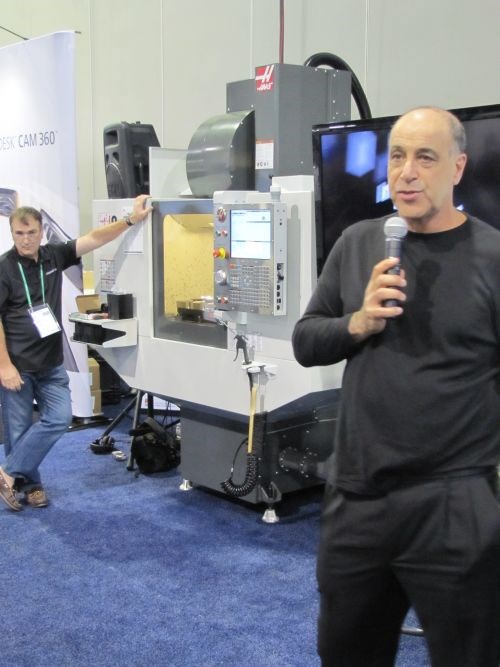CNC Programming in the Cloud
Autodesk CAM 360 is intended to help product designers and engineers integrate manufacturing processes into unified, collaborative workflow. Cloud-based computing, a key feature of CAM 360, powers toolpath generation, program simulation and postprocessing with “anywhere, anytime” connectivity.
Share





This week, Carl Bass, president and CEO of Autodesk, introduced CAM 360 in the exhibit hall at Autodesk University in Las Vegas. Attendees could watch milling programs created in CAM 360 machine parts on a Haas SUPER Mini Mill.
Cloud computing is a simple concept—use the web to engage software tools and do the related number crunching on remote processors, which provide almost unlimited computing power. Autodesk has applied this concept to its online design, planning and engineering solutions, which all share the same platform to create a unified, integrated and collaborative workflow. Autodesk CAM 360 will soon bring critical manufacturing capability onto this platform. This enables designers and engineers to download product designs and digital prototypes from a shared database, and then prepare CNC machining programs. CAM 360 is based on the high speed machining technology developed by HSM Works, acquired by Autodesk last year.
The company characterizes this programming capability as the industry’s first cloud-based solution for computer-aided manufacturing (CAM). CAM 360 builds upon Autodesk’s existing suite of cloud-based offerings such as PLM 360, SIM 360 and Fusion 360. One of the most important benefits of using cloud-based solutions is access to the software and data on almost any device connected to the web. This approach enables the user to open files stored in a remote database and perform operations with virtually unlimited computing power. “By working in the cloud, the job follows you to any computer you have handy that’s on the web,” is how one Autodesk spokesman explained it.
At first, CAM 360 will provide the CNC programming capability most likely to be of critical value to designers and engineers who are about to move from digital prototypes to machined parts. This capability includes 2 ½-axis to five-axis positional (3 + 2) programming for CNC machining centers and two-axis turning on CNC lathes. A library of postprocessors will be accessible for preparing machine code. Additional CNC programming capability is available with a number of vendors who are Autodesk partners offering stand-alone CNC programming systems.
CAM 360 is expected to be generally available in early 2014 in selected markets, but a chance to preview and experience this product is possible at cam.autodesk.com.
Related Content
-
ERP Provides Smooth Pathway to Data Security
With the CMMC data security standards looming, machine shops serving the defense industry can turn to ERP to keep business moving.
-
How to Mitigate Chatter to Boost Machining Rates
There are usually better solutions to chatter than just reducing the feed rate. Through vibration analysis, the chatter problem can be solved, enabling much higher metal removal rates, better quality and longer tool life.
-
Tips for Designing CNC Programs That Help Operators
The way a G-code program is formatted directly affects the productivity of the CNC people who use them. Design CNC programs that make CNC setup people and operators’ jobs easier.





















.jpg;maxWidth=300;quality=90)


